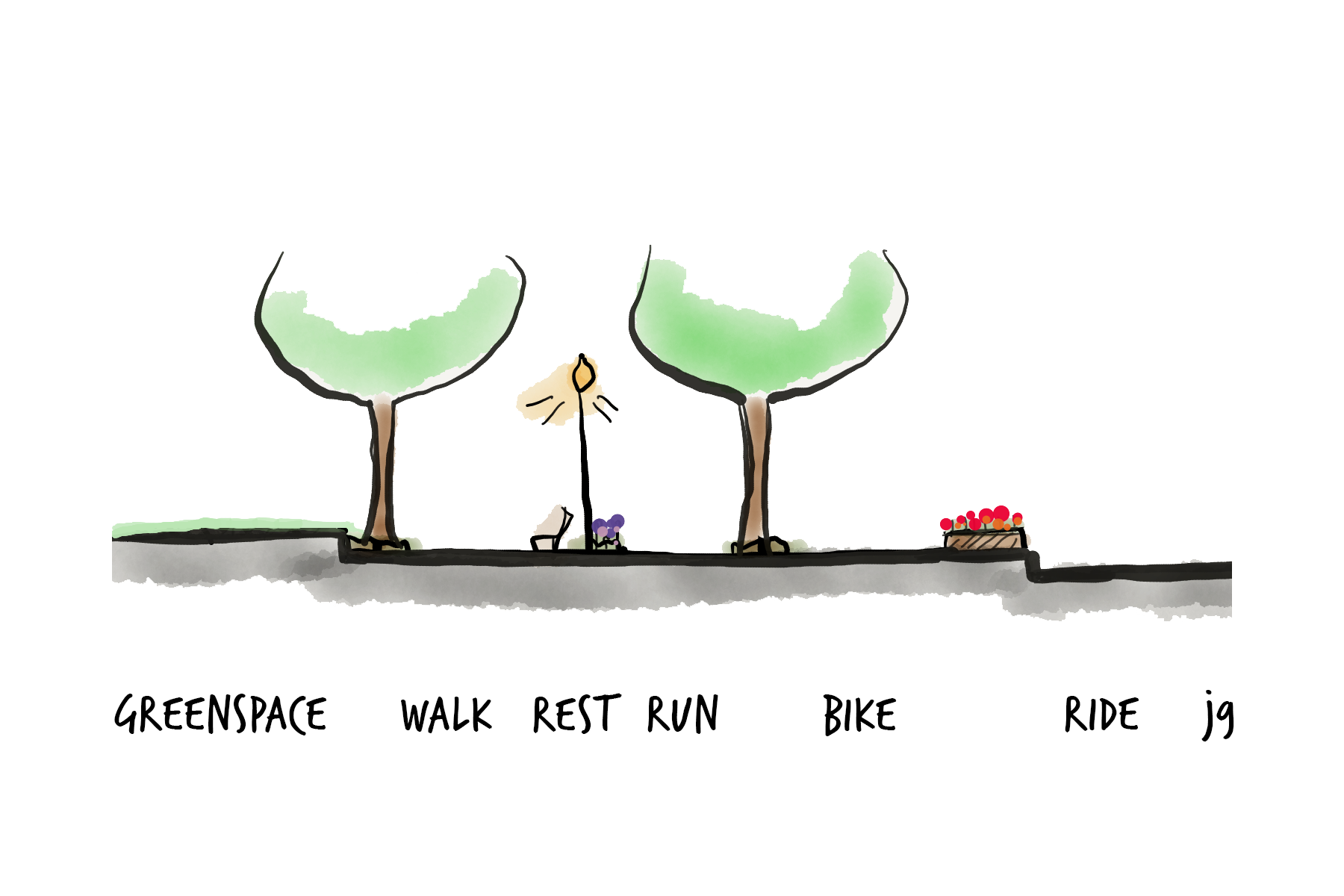Perimeter Trails
Acknowledging the different speeds with which walkers, runners and cyclists travel is a fundamental reason to give each their own lane in order to create a safer and more inclusive exercise experience.
Physical Activity Zone
Green space connections, parks and trail networks are critical infrastructure for supporting personal health, public health and planet health. Opportunities to develop and maintain personal fitness and support mental respite are hallmarks of a healthy society and part of a necessary planning strategy at the heart of meeting daily physical activity needs.
Perimeter trails are an effective design solution for providing pedestrian options for transportation and recreation in a community. Noted for their visibility and connectivity to surrounding spaces, perimeter trails are a simple way to bring the peace of the park to the stress of the streets. In addition to improving environmental quality in an area, placemaking for outdoor exercise is a proven way to influence the health probability and economic elevation of a neighborhood. Well designed and maintained park spaces can also better public health and safety by reducing crime and improving societal well-being by serving as an antidote to isolation.
Because placemaking in greenways greatly influences physical activity, when we talk about hiking and biking, let’s talk about running too. Aerobic exercise is a vital part of a balanced active lifestyle and when this important physical activity is left out of the conversation we fail to make a place for it. Acknowledging the different speeds with which walkers, runners and cyclists travel is a fundamental reason to give each their own lane in order to create a safer and more inclusive exercise experience. For example: walkers typically travel 3 mph, runners at 6 mph and cyclists at 12 mph. Shared paths are like a street without lane lines allowing vehicles traveling 30 mph, 60 mph and 120 mph to share the same road.
Reimagining the public realm to shape healthy living patterns by incorporating active design strategies is a design approach that can be a small scale intervention in public health with a capacity to make a large impact.
